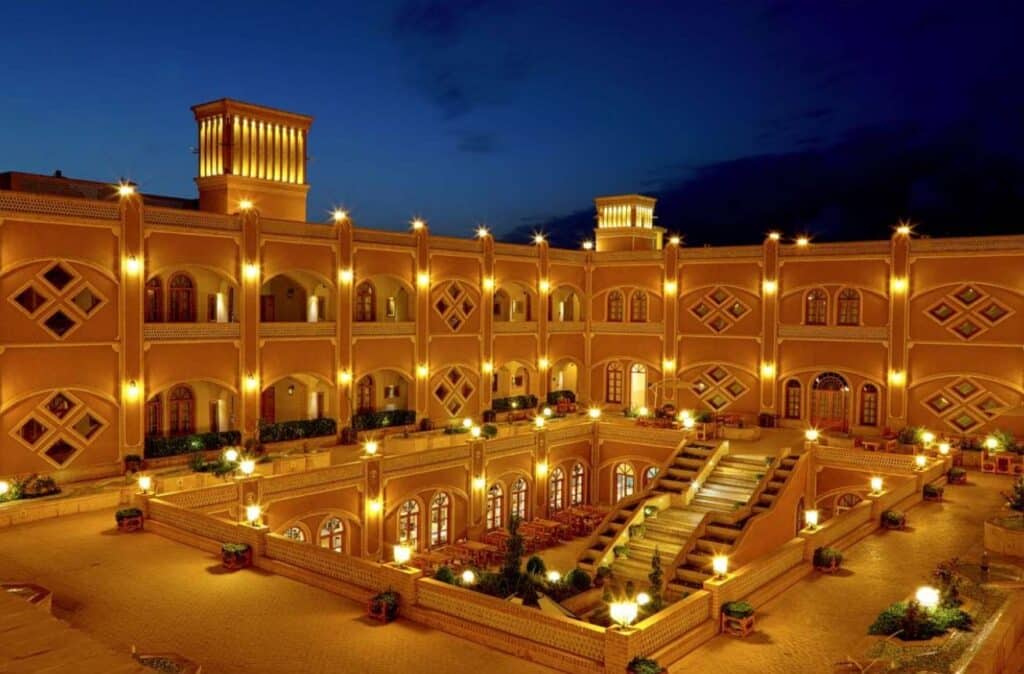Lari House in Yazd: Architectural Gem in the Desert
Historical House with Unique Architecture

Lari House, built in 1869, during the Qajar era, stands as a testament to architectural splendor in the heart of the desert.
The story of how this house came to be known as “Lari House” is intriguing. Haj Mohammad Ibrahim and his family decided to migrate from Larestan to Yazd. In a city filled with locals, distinguishing newcomers is natural. Thus, they referred to as the “Lari” family. As the descendants of Haj Mohammad Ibrahim later built and resided in the house, it became universally known as the “Lari House.”
Contents
The Magnificent Estate
Spanning 1700 square meters, Lari House featured six houses and 22 rooms during its prime, making it one of the largest and most luxurious homes of its time.
The Eventful History of Lari House
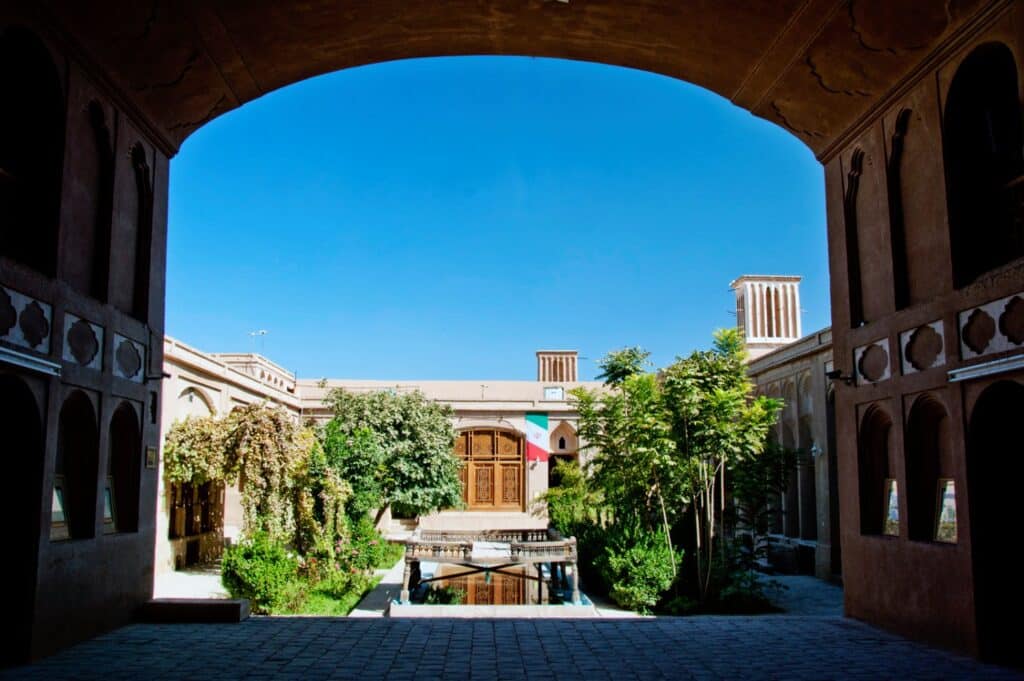
Lari House’s history is a tapestry of events that continued into the Pahlavi era, with the laughter of children and the bustling of residents heard until the reign of Reza Shah. However, due to conflicts among heirs, the house eventually became an empty property.
From Glory to Ruin
After its glorious days, Lari House experienced a period akin to ruin. It even briefly served as a place of worship for the Nematollahi Yazd congregation, witnessing unexpected and unprecedented events.
Preservation and Transformation
In 1363 SH, the Cultural Heritage Organization stepped in and acquired this historical structure. Following extensive renovation and restoration, it was transformed into the Lari House Museum.
Who Were the Lari Family?
The Laris were a merchant family who migrated from the city of Lar, renowned for its narrow streets, to Yazd 270 years ago. This migration opened up prosperous opportunities for the family, allowing them to establish credibility in the world of commerce. As a result, they became deeply rooted in Yazd, with the name “Lari” being their only connection to their hometown.
Architectural Splendor of Lari House
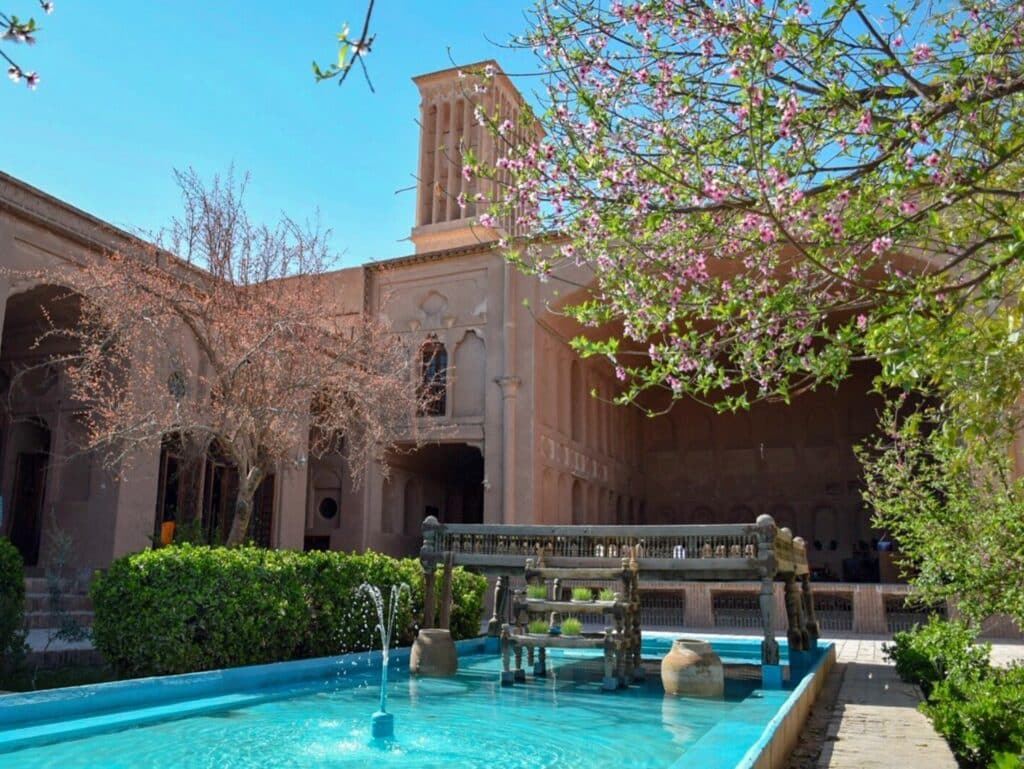
Houses constructed in desert regions boast unique architecture and incorporate specific materials. Adobe, a dried mud brick, is one of the most commonly used building materials in desert areas, aiding in interior cooling. However, it is susceptible to moisture and has a limited lifespan. Consequently, alongside raw adobe, fired bricks are used in the construction of Lari House.
Yazd experiences scorching summers and harsh winters. In the past, architectural features played a significant role in regulating indoor temperatures, alleviating the burden on heating and cooling devices. Windcatchers, a prominent feature of Lari House, greatly aided in ventilation and cooling, preserving water reservoirs and interior room temperatures.
Ornate Details
Artistry such as mirror work, plasterwork, paintings, stained glass, and tall columns is prevalent throughout Lari House, adorning various sections of the property. Further details about each courtyard will be discussed in the following sections.
A Tour of Lari House’s Sections
Lari House boasts three courtyards, each with its unique ambiance, a characteristic that extends into its rooms.
Main Courtyard – The Heart of Lari House
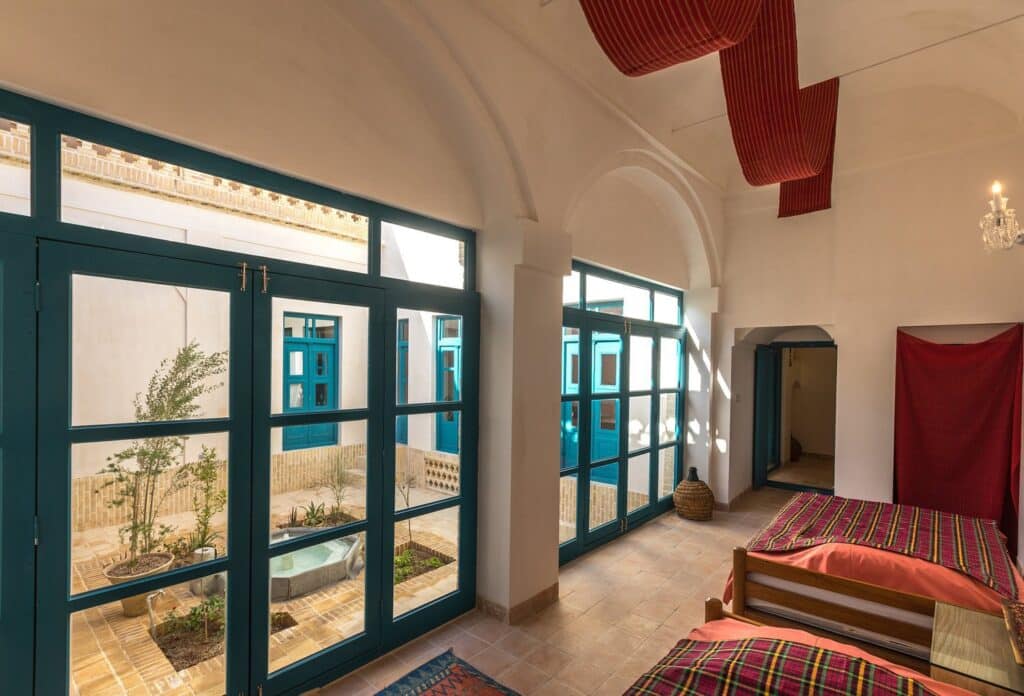
To reach the main courtyard, one must enter through the second door of Lari House. The centerpiece of this courtyard, a large pool, immediately captures your attention, especially if you’re lucky enough to stand before its shimmering waters.
A grand, canopied bed is placed beside the pool, named the “Sunset Bed.” Far from being a frivolous addition, it exemplifies the epitome of refined taste. The “Sunset Bed” is one of the most captivating features of Lari House.
As the scorching desert sun descends and the heat subsides, the magic of the “Sunset Bed” unfolds: it becomes a host for relaxation, gatherings, or a private escape for stargazing in the desert’s nurturing embrace.
Beyond the enchanting sunset moments in this courtyard, our gaze is drawn to the grand ivan and its windcatcher. The ivan, with its spaciousness, serves as an ideal venue for gatherings and hospitality, while the windcatcher takes on the role of providing fresh, cool air to this setting.
The Rooms Surrounding the Main Courtyard
Upon exploring each side of the main courtyard, you’ll encounter a multitude of rooms. The rooms on the lower level of Lari House are equipped with windcatchers, designed to cope with the summer heat. However, the rooms facing north, without windcatchers, are tailored to retain warmth during the chilly desert winters.
Before entering these rooms, vibrant, dreamlike tiles captivate your senses, offering a glimpse of the colorful wonders that await inside. Upon entering the rooms, you’ll find yourself surrounded by walls and ceilings adorned with intricate plasterwork, mirror work, and paintings, leaving you in awe of the intricate craftsmanship.
This space and architecture indicate that the courtyard rooms were designed for ceremonies and important gatherings, showcasing the full extent of the architect’s artistry and grandeur.
The Ivans
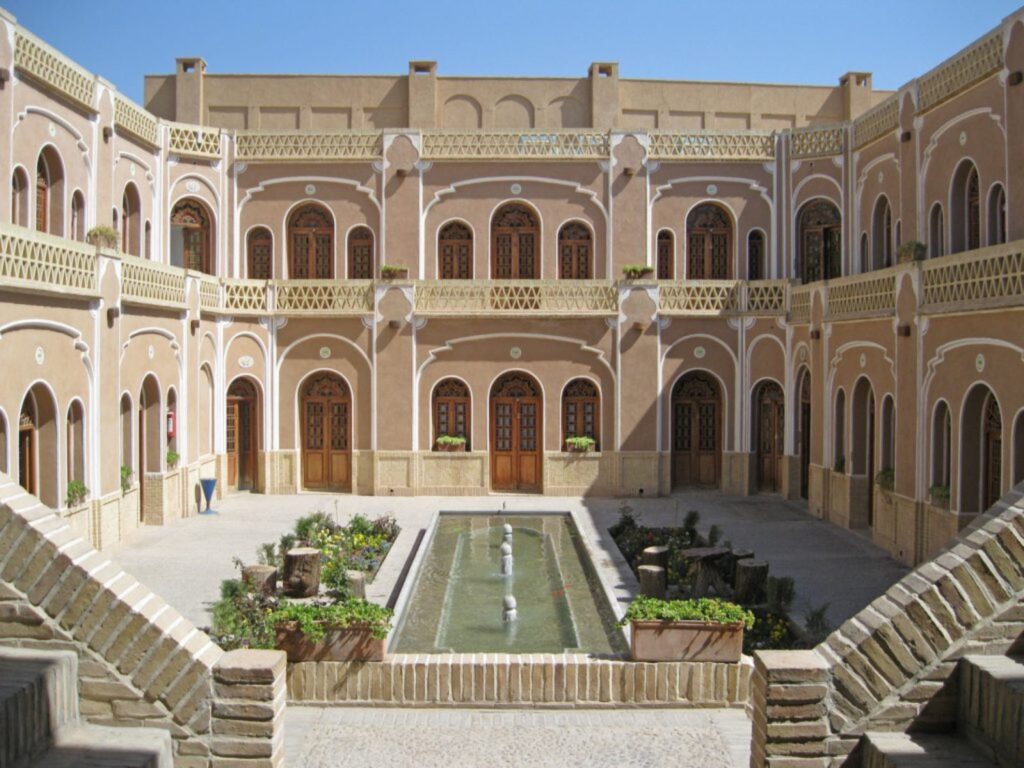
The primary ivan of Lari House is so large and impressive that it stands as one of the most important and versatile parts of the house.
This ivan, with direct access from the windows of adjacent rooms, features a large pool right in front of it. Ivans are among the most fundamental architectural elements in historical Yazd houses, primarily serving to provide shade throughout the day.
Halls and Additional Rooms
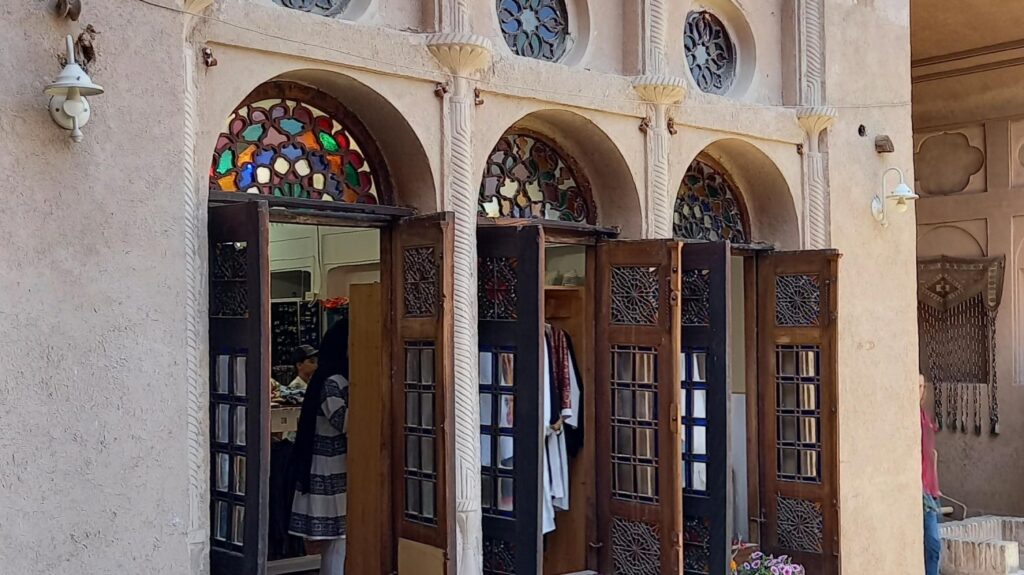
The intricately decorated rooms with stained glass doors in Lari House are an integral part of the historical houses of Yazd. Lari House is no exception, housing rooms such as “Sedari,” “Panjdari,” and “Haftdari,” with their colorful stained glass doors neatly aligned. These rooms eagerly await the slightest ray of light to bring them to life and infuse the house with energy.
However, in Lari House, besides the windcatcher-equipped rooms designed for summer living (southern rooms of the house), there are also rooms without windcatchers in the northern part of the house. These rooms are sun-soaked and devoid of windcatchers, designed for use during the winter months.
The presence of these diverse spaces highlights the flexibility of design in Lari House, catering to the needs of its residents throughout the year.
Windcatchers – Ingenious Desert Invention
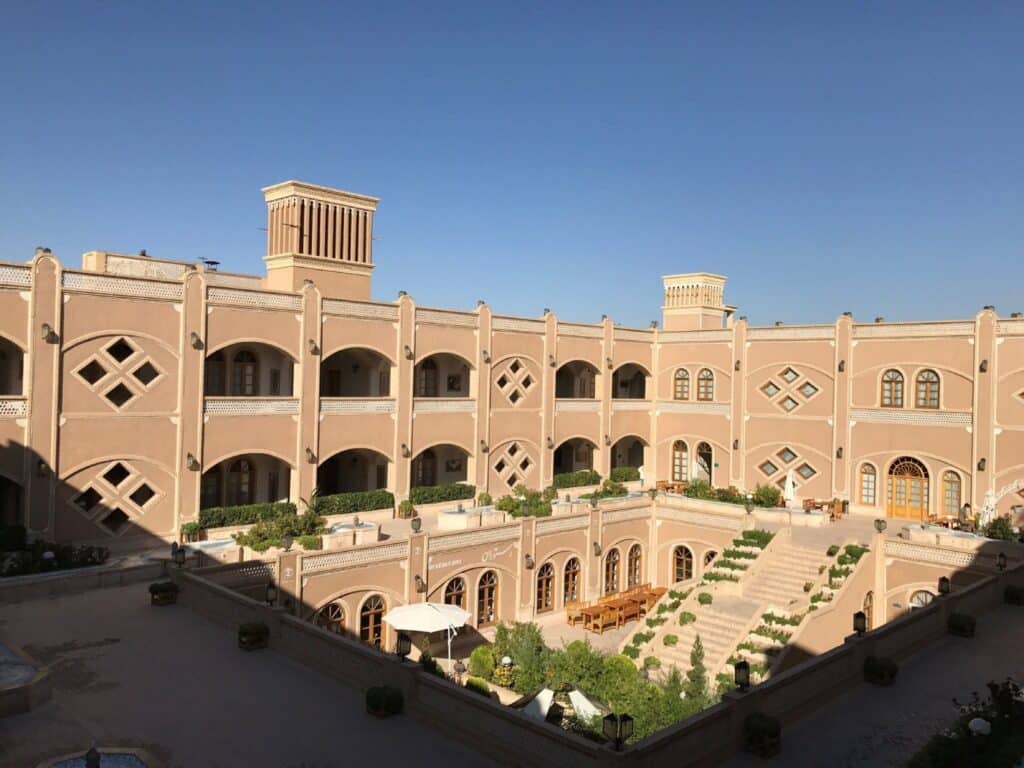
Undoubtedly, windcatchers were a significant invention of their time. In the scorching days when air conditioning, fans, and even electricity were non-existent, windcatchers worked like magic in desert homes.
Regions with hot and dry climates or hot and humid climates have different requirements. In the former, like the houses in Yazd, windcatchers were constructed to channel the prevailing wind, allowing it to enter and cool the house’s interior. Dry winds, lacking adequate moisture, would pass through the water channels within the windcatcher, cooling down and providing a refreshing breeze to the interior rooms or cellars.
Cellars – The Hidden Treasure Trove
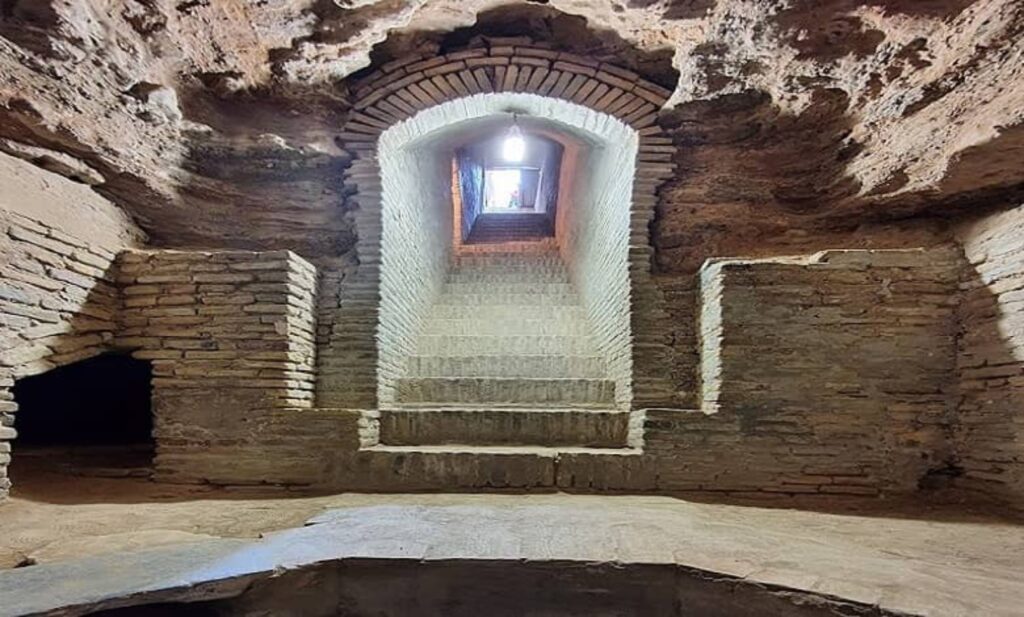
The cellar essentially serves as an underground water reservoir used in ancient times for storing water in desert areas. Lari House’s cellar is located in the main courtyard and accessed by a flight of 38 steps. It is connected to a windcatcher, which facilitates the circulation of air and, importantly, keeps the water cool within.
The coolness of the cellar made it an ideal storage space for various items, including perishable goods like meat. The Lari family capitalized on this advantage, utilizing the cellar for multiple purposes.
Lari House, one of its time’s grandest residences, goes beyond its four rooms and a cellar. It encompasses other significant sections, including a kitchen, akin to today’s detailed kitchens, a storage area for food and other items, and a stable, serving as the parking space of that era’s vehicles.
All three sections, the storage area, kitchen, and stable, featured separate entrances and exits to the house. This design maintained the segregation of the residents from the servants and preserved their privacy.
Historical Documents Museum in Lari House
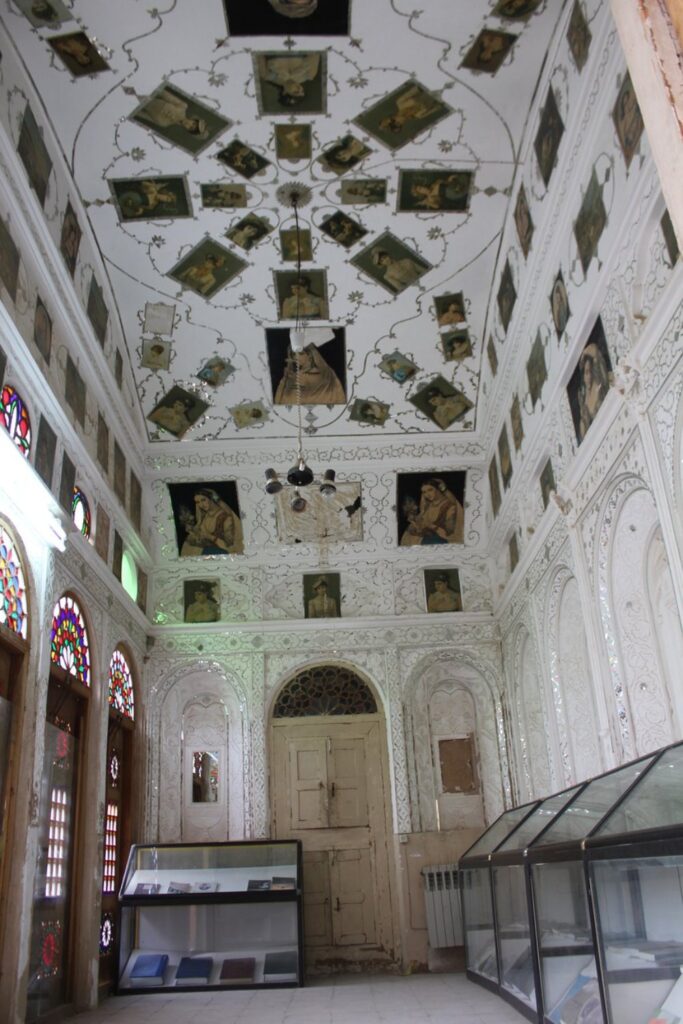
The history, legacy, and architecture of Lari House alone make it a compelling choice for our journey to Yazd. However, the existence of a museum within this house provides another reason to immerse ourselves in its history.
As per the decision of the Cultural Heritage Organization, the Historical Documents Museum of Yazd is established within the premises of Lari House, housing around 110 historical documents. These documents narrate the days of unveiling the hijab, ownership of qanats, government decrees, marriages, announcements, and more.
While the presence of a historical documents museum alongside Lari House creates an intriguing combination and offers more opportunities to delve into the past, it’s important to note that these two museums have no specific connection; their shared aspect is their historical significance!
Best Time to Visit Lari House
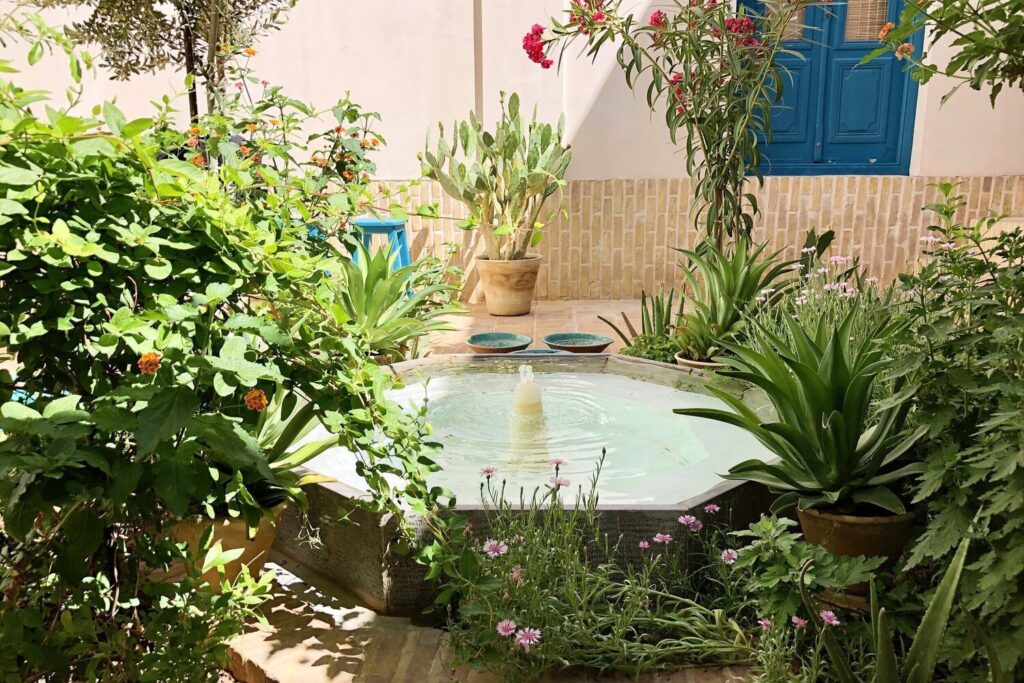
To discuss the best time to visit Lari House, we must consider the suitable seasons for traveling to the city of Yazd in general.
As mentioned earlier, Yazd Province is located in a desert region, and as a result, it experiences scorching days from Khordad month to Mehr month. However, as we approach the middle of autumn and the winter season, the weather becomes more moderate, attracting more travelers to the area.
Keep in mind that with the temperate climate and the popularity of Yazd as a tourist destination, the cost of your trip, from tickets to accommodation, will increase.
If you plan to stay overnight, I recommend getting acquainted with traditional Yazd hotels; you might find them appealing.
Ultimately, the choice is yours: enduring the heat, a more economical and secluded journey, or pleasant weather, more tourists, and slightly deeper pockets?
Visiting Hours for the Lari House Museum
The Lari House Museum in Yazd welcomes both Iranian and foreign tourists throughout the week. However, there is a difference in ticket prices, with lower rates for fellow Iranians and slightly higher rates for international travelers.
The museum’s working hours are from 8:30 AM to 9:00 PM during spring and summer, and from 8:30 AM to 7:30 PM in the autumn and winter. This extended timeframe provides ample flexibility for planning your visits to other attractions in Yazd.
